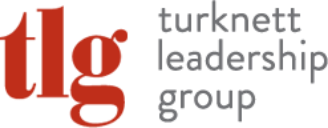
 Lyn Turknett,
Co-founder and Co-chair, TLG
Lyn Turknett,
Co-founder and Co-chair, TLG
The same qualities that help all of us expect, navigate, and even enjoy change – being curious, open, questioning, collaborative, agile and adaptable – help us whether we are managing change or navigating unexpected change.
We were consulting in large organizations when the first waves of downsizing occurred in the 1990s. There had been a somewhat unspoken contract between employer and employee – “if I’m loyal to you, you will be loyal to me” – and suddenly that was broken. Richard McKnight, writing in Training and Development in 1991, introduced a way of thinking about ourselves that can help us build resilience. He said that we can see ourselves in one of three ways, and the mindset we create makes all the difference.
- We can see ourselves as a VICTIM, blaming others and feeling powerless and singled out for mistreatment.
- We can see ourselves as at SURVIVOR, keeping a “fighting spirit,” possibly blaming higher-ups but still working hard.
- We can see ourselves as a NAVIGATOR, capable and valuable, able to affect our own destiny and willing to ask for what we need.
No matter what our position in the organization, seeing ourselves as valuable, capable, humble (willing to listen and learn from others) and confident (willing to assert our own views) will make us much better change navigators.
Effectively Communicating and Embracing Change
Part of successfully navigating change includes properly communicating said change. But how? Certainly good, open, transparent communication helps, but from what I’ve seen in forty years of consulting is that no amount of “effective communication” can “make” people embrace a change. When at all possible, leaders need to involve employees – and all stakeholders – in change from the beginning for it to be really effective.
Of course, when the unforeseen happens – the dotcom crash, the 9/11 attacks, the pandemic – rapid, top-down change is often necessary to save the organization. Leaders who are empathetic and transparent in explaining the situation make a big difference. The worst leaders in those situations sit in their office and worry; the best leaders let the remaining employee base know repeatedly exactly what the situation is and what is being done and why. If there are layoffs they explain how decisions were made and what was done to help those who are gone. They communicate frequently with messages and town halls. And they find ways to involve everyone in appreciating the past and creating the future.
In most situations, though, it’s easy to involve others. My two favorite change quotes are these:
- From the amazing systems thinker Peter Senge: “People don’t resist change; they resist being changed.” Humans are remarkably open to change; they often seek it. And even a cursory review of the massive change people adapted to at the beginning of the pandemic shows how resilient and resourceful we can be.
- “Include me, I’m your partner; exclude me, I’m your judge.” I don’t know who said this, but it is so, so true. I also believe there is an even better reason to include other brains in plans for change – you will get a better result.
The Three Levels of Change Leadership
I think there are three levels of change leadership, and the best leaders always opt for the third level:
- At the First Level of Change Leadership, leaders come in with a fully formed plan, brook no debate, and think that if the execution and the communication are perfect enough, all will go smoothly.
- At the Second Level of Change Leadership, leaders recognize that if they really want to get people behind them, they have to listen to folks involved in the change. Leaders who listen to ideas and involve employees in the change get buy in and support. Second Level leaders lessen resistance.
- At the Third Level of Change Leadership, though, don’t just listen to create buy-in – they listen because they know they will learn something. They know that the change will be more successful because they are using the knowledge of people intimately familiar with the problem.
The JC Penney Debacle
I’ve seen many examples of the power of including all stakeholders in change – Alan Mulally’s experience at Ford is one of the best public examples. I’ve written before about the excellent “third level of change leadership” of Paulette Corbin at Delta and Shan Cooper at Lockheed Martin and WestRock. In both articles I also wrote about one of the worst examples – Ron Johnson’s debacle at JC Penney. Here is an excerpt from the second article that captures what not to do:
“I have been fascinated by the story of Ron Johnson, the Apple exec who lasted only fifteen months as CEO of J.C. Penney – from November of 2011 to January of 2013. Sales plummeted, and the stock, which ticked up as he was hired, was down 51% over his tenure.
Of course, when the unforeseen happens – the dotcom crash, the 9/11 attacks, the pandemic – rapid, top-down change is often necessary to save the organization. Leaders who are empathetic and transparent in explaining the situation make a big difference. The worst leaders in those situations sit in their office and worry; the best leaders let the remaining employee base know repeatedly exactly what the situation is and what is being done and why. If there are layoffs, they explain how decisions were made and what was done to help those who are gone. They communicate frequently with messages and town halls. And they find ways to involve everyone in appreciating the past and creating the future.
I remember following Ron Johnson during his tenure and feeling somehow guilty because I secretly hoped that he would fail. Why? Because as a leader moving into a new role, he did all the things I believed a new leader should never do. He didn’t appreciate or leverage the history of the organization, and he didn’t seem to ask any questions. Like Steve Jobs, he had the vision, and, by God, it was get on the train or move out of the way. (I am still trying to figure out Steve Jobs. I know his success means I have a lot to learn. But I still think he was mostly successful despite his out-sized weaknesses and because of his super-human gifts.)”
Go to Where the Cash Registers Are
I have a friend who recently moved into a role at a new organization. She is busy now talking to everyone, both within the division she leads and across the organization, and she has instituted newsletters and frequent town halls. She asks for ideas and telling people what’s being planned. Why? Because people on the front line know what’s going on and because all of us want to be in the know.
Roger Enrico, the famed former CEO of PepsiCo, said, “I go where the cash registers ring.” I experienced the value of that second hand a few decades ago. It was a time before databases were very smart – garbage in, garbage out was literal since a query could only find exactly what was put in. Our youngest son was home from college during the summer working as a temp for a healthcare organization. His job was putting in patient data for a new electronic database. He realized that names of streets, names of employers, and names of cities were, for example, sometimes abbreviated and sometimes spelled out, and he knew that meant problems down the road. But no one was asking him anything, and he didn’t know who to tell.
If you are leading a change, go where the cash registers ring, and LISTEN.

